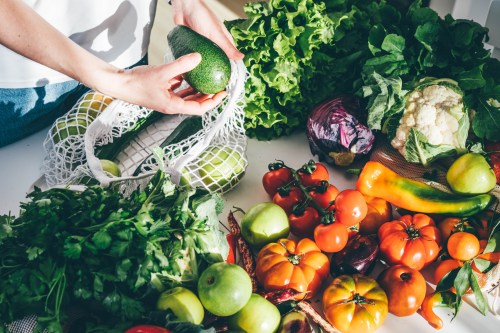Healthy food and drink brands are prettier than ever—but you still have to read that label
Healthy food branding is getting prettier and more sophisticated. But here's why our senior food writer says you should still be skeptical.

Call it the Instagram effect, but chances are the inside of your fridge is looking pretty ~cute~ these days. While in generations past, packaging for healthy food and drinks looked more crunchy than cool, now, it’s hard to imagine a brand launching without a sans serif font and minimalistic label—as the New York Times recently called out in a major way.
Look, I’m a sucker for pretty packaging just as much as the next person. One of the perks of being Well+Good’s senior food writer is a steady influx of new-to-the-market healthy foods and drinks. Some of it is so dreamy that I too can’t help but share it on Instagram. But as a reporter and certified health coach, I also know beauty is more than just skin—or font—deep.
Let’s not lose sight of why the food industry needed a healthy makeover to begin with: what’s listed in the ingredients list and on the nutritional panel is still what matters most. (Along with good ingredient sourcing, ethical treatment of workers, and sustainability.) Notice how I didn’t say “Instagram meme-creating skills” or “pastel-colored packaging?”
As a reporter and certified health coach, I also know beauty is more than just skin—or font—deep.
Go by clever branding and IG follower count alone and you could get played. Remember: The primary goal for brands is to make money, not make your bod healthier. Yes, grocery stores (and the products they contain) are healthier than ever, thanks in part to the boom in organic foods and large corporations buying up (and widely distributing) formerly niche healthy brands. And this food reporter is happy to say that a lot of the eye-catching healthy foods and drinks brands actually do deliver on the nutritional front.
But it’s still important to check that label to ensure what you’re buying aligns with your personal eating goals. Just because a company’s brand aesthetic is thoughtful and on point doesn’t mean their products are. And be wary of brands that have a “health halo” just by virtue of using buzzy wellness ingredients like adaptogens, turmeric, collagen, or CBD. These ingredients certainly have health-boosting properties. But inclusion of one of these ingredients alone does not automatically mean the entire product is good for you. If something has turmeric in it, but is also full of sugar and other processed ingredients…well, it’s more likely to cause inflammation than reduce it.
Maybe you know all this. Maybe someone could wave a sparkling water encapsulated in a glittery neon bottle and you’d still just grab it and eye the sugar content. Just in case, let this be a message to all the big brands out there: We’re watching you!
Another way brands try to fool consumers: referring to sugar by less-known names. And here are some other common food label reading mistakes even healthy people make.
Sign Up for Our Daily Newsletter
Get all the latest in wellness, trends, food, fitness, beauty, and more delivered right to your inbox.
Got it, you've been added to our email list.










